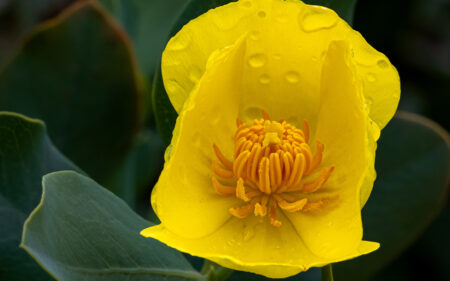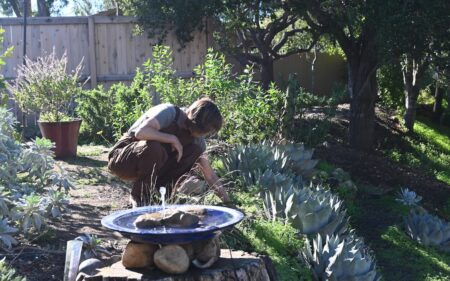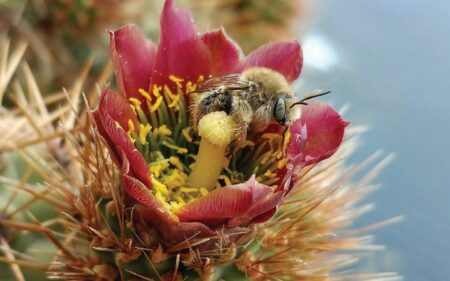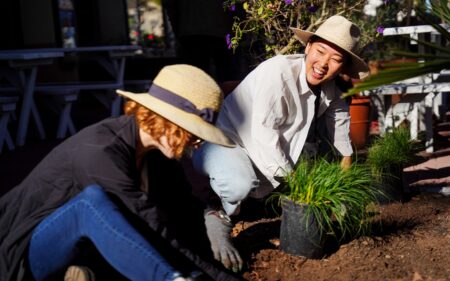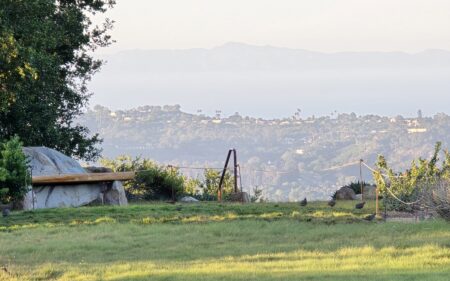Have You Seen Our (Secret) Garden?
Nestled just above the intersection of Tunnel and Mission Canyon Road is the “Salutation Garden section,” a small triangular parcel of land owned and maintained by Santa Barbara Botanic Garden. This section of the Garden isn’t on our visitor map, so even regular visitors may not realize it’s a part of the grounds, but it is a vital part of the Garden.
Perhaps you’ve caught a glimpse of some striking colors, patterns, and textures as you driven up to our main entrance, a simple yet effective impression. For first time visitors, this section’s palette of native plants is intended to serve as a guide to inform people they are headed in the right direction. It not only welcomes people to the Garden, but also serves as a landmark for the Mission Canyon neighborhood.
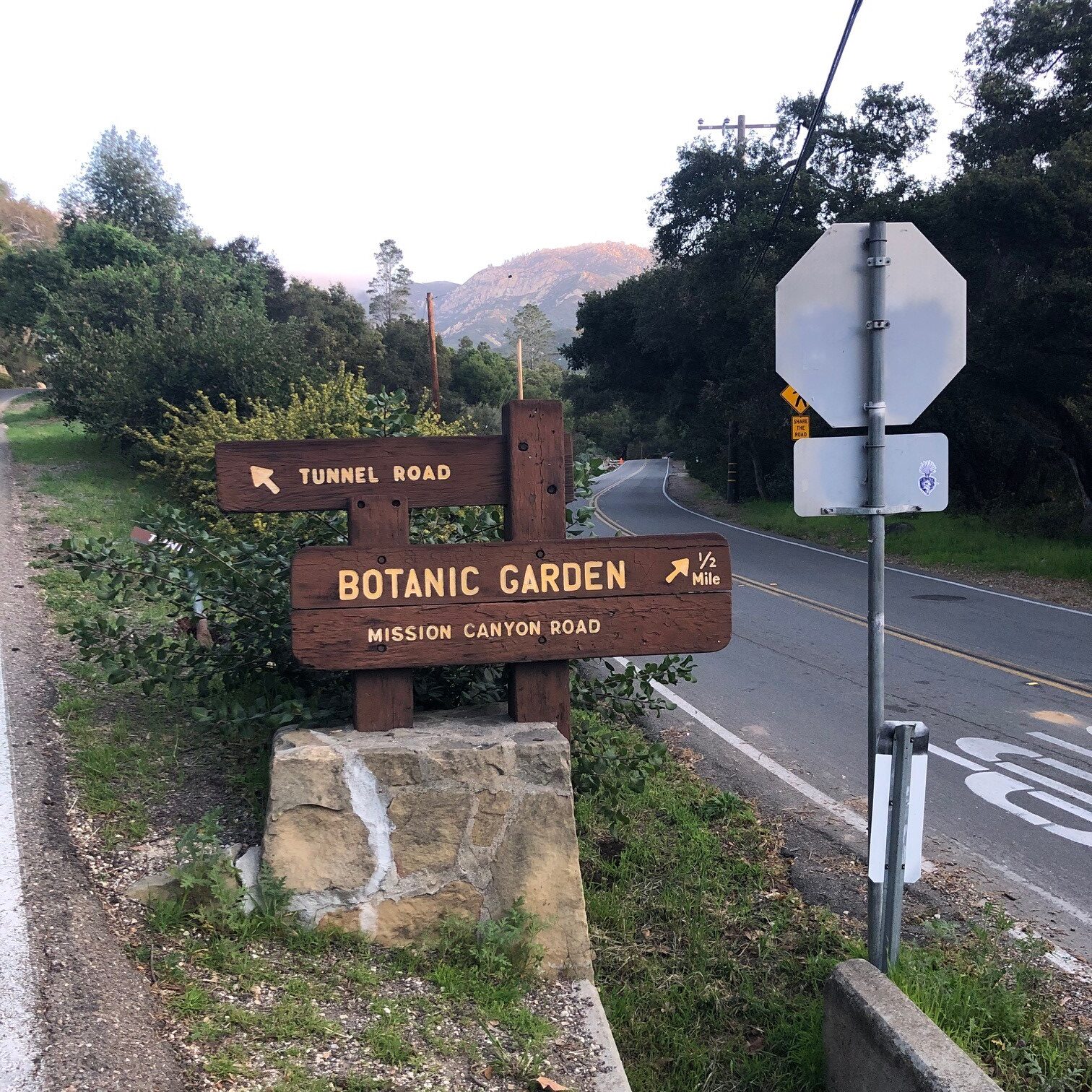
Removing Invasive Species to Make Room for Native Plants
The Salutation Garden section was originally the site of a grove of large blue gum trees (Eucalyptus globulus), which were removed in 2005 to mitigate wildfire risk in Mission Canyon. With the blue gums removed, this space needed a new design. The Garden worked with renowned Santa Barbara Landscape Architect Isabelle Greene to design an improved garden section that could serve as a welcoming greeting to visitors driving up Mission Canyon Road. While the entire plan has not yet been implemented, this section serves as a space filled with California’s native plants that display year-round appeal with minimal watering and care. In 2007, this area was planted with flannel bush (Fremontodendron californicum), penstemon species (Penstemon spp.), and desert willow (Chilopsis linearis), three plant types that have thrived in the years since their installation.
The area has filled out abundantly since the initial planting and continues to serve as an inspirational native plant landscape display for visitors and anyone passing by. One of the goals of the section is to emphasize how easy and beautiful native plant gardens can be, and to demonstrate the low maintenance they require. Large, layered masses of plantings and well-established trees make up the majority of the landscape. Seasonal changes and highlights are very apparent in the growth of plants, in their blooms, and in the wildlife that use the canyon corridor. In fact, it’s not uncommon to observe deer families, coyotes, and rarer songbirds using the Salutation Garden section as habitat to find a meal, take cover, and thrive in this welcoming, sheltered space. It demonstrates how a sustainable and appropriately designed site can be aesthetically attractive, enhance soil health, work with topography, exhibit effective water management, minimize weed control, and contribute to habitat vitality.
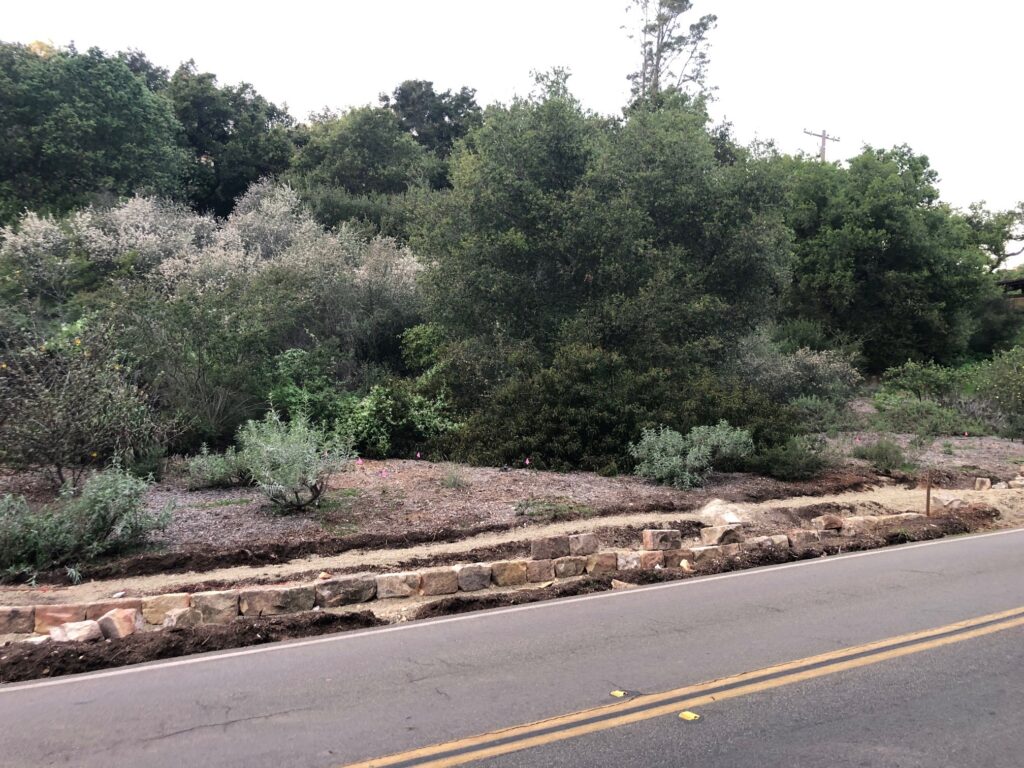
Gardening to Conserve Rare Native Plants
Additionally, this space has become an integral area for plants intended for restoration and conservation. Since the Salutation Garden section is separated from the rest of the Garden, it is a great location for rare plants that need room to spread out and separation to prevent hybridization.
Recently, the Garden’s Horticulture and Conservation teams collaborated to add the endangered Santa Cruz Island bush mallow (Malacothamnus fasciculatus var. nesioticus) to this section. Bush mallows (Malacothamnus spp.) are notorious for spreading out far and wide through underground shoots, but since the species is so rare, preserving each genetic individual is critical. The Salutation Garden section provides enough room for these shrubs to roam, while ensuring the plants would not be intermixed with other species of bush mallow, which can occur if different types are planted near one another. When these plants are large enough, cuttings will be taken to re-establish populations of this species on Santa Cruz Island.
What Native Plants Are Thriving in this Section?
The design of the Salutation Garden section continues to evolve as we include more species in its palette of plantings. Throughout the year you can see large flowering shrubs, low spreading perennials, and annual wildflowers. Early in the year, your eye will be drawn to the cloud-like flowers of manzanitas (Arctostaphylos spp.) and California lilac species (Ceanothus spp.). As spring kicks off, Amethyst Bluff sage (Salvia ‘Amethyst Bluff’) and other salvias flower, their purple hues perfectly complement the bold yellow of the massive flannel bushes (Fremontodendron californicum) that still dominate the area. In the summer, the garden is speckled by cheery, bright yellows from the common madia (Madia elegans) that lines the roadside drainage area and the white flowers of the blue elderberry (Sambucus mexicana). Scattered throughout the space are pinks and purples from a bouquet of native flowers, including the penstemon (Penstemon spp.), caterpillar phacelia (Phacelia cicutaria), California rose (Rosa californca), and De La Mina Verbena (Verbena ‘De la Mina’), the latter a Santa Barbara Botanic Garden horticultural introduction. Stunning white flowers emerge from the Matilija poppy (Romneya trichocalyx) and sacred datura (Datura wrightii), each contrasted by their distinct green foliage hues. Other chaparral mainstays like lemonade berry (Rhus integrifolia) and manzanitas (Arctostaphylos spp.) boast bright red fruits and evergreen leaves, along with signature mounding forms. Even the poison oak (Toxicodendron diversilobum) provides color and beauty, weaving its way through the plantings and seasons, going from green to red in the fall, while its white berries provide important food for native birds. Sharp shapes emerge from the chaparral yucca (Hesperoyucca whipplei) and giant wildrye (Elymus condensatus) sending stalks into the air, piercing through the soft foliage of the plants around them. Some plants come and go quickly like the dramatic pink of the western redbud (Cercis occidentalis) and the bright oranges of California poppies (Eschscholzia californica) making an impressive splash each year.
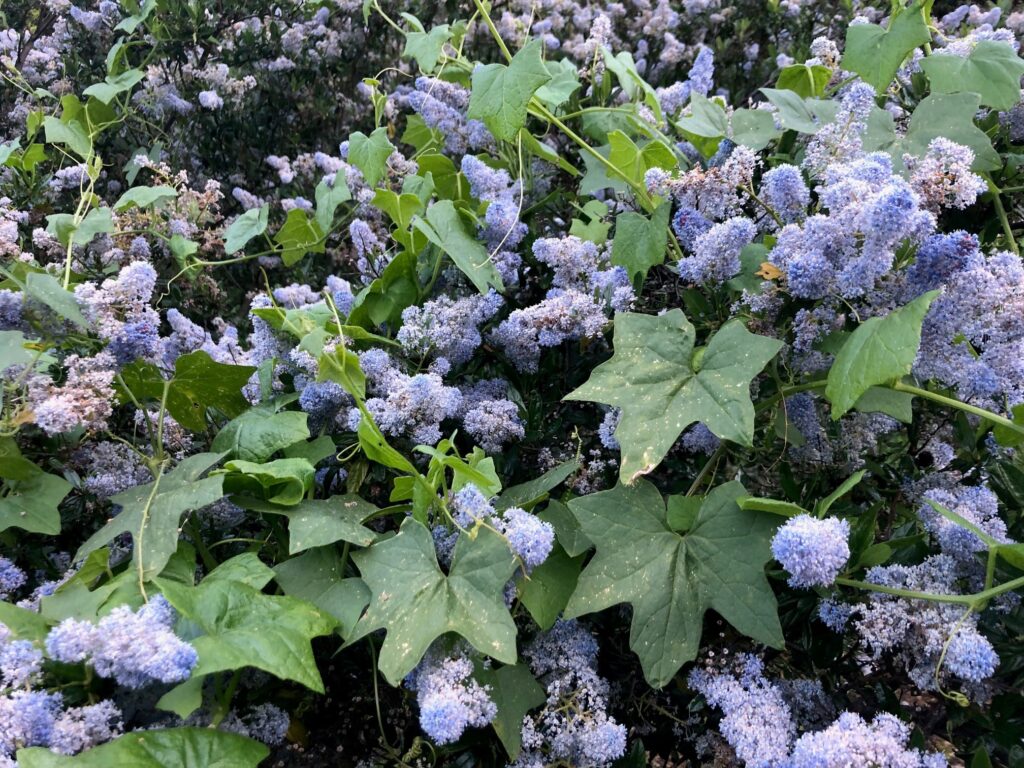
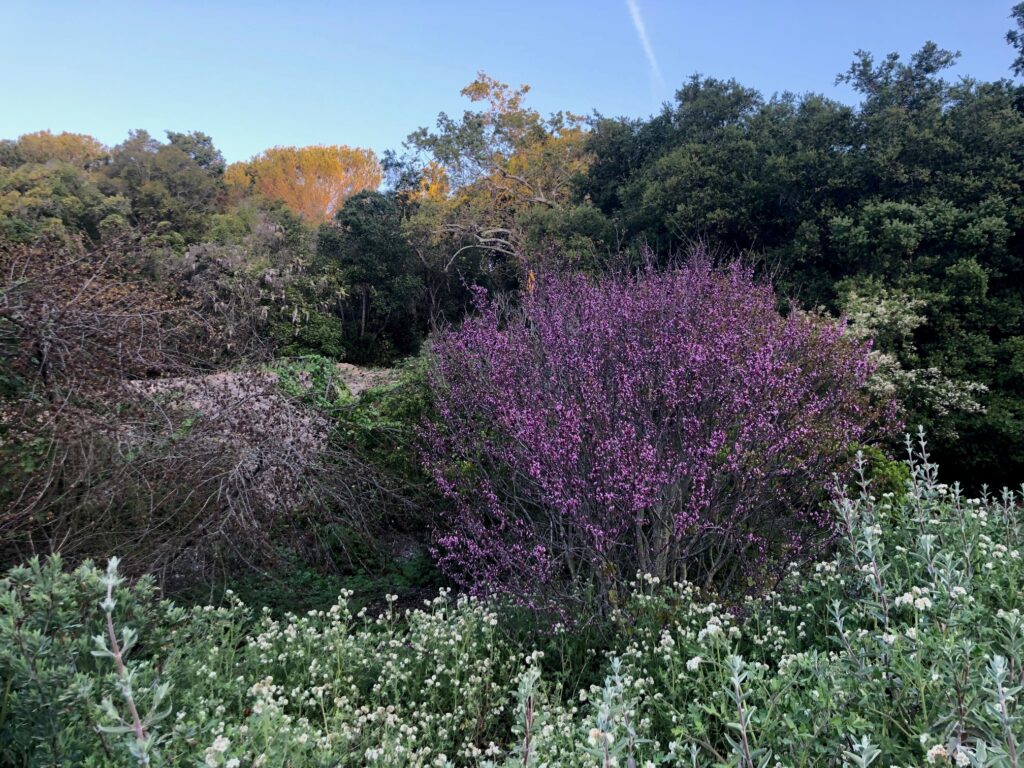
The Garden Continues to Grow and Evolve
If you visit the Garden frequently, you may have noticed some recent changes in this area. The most visible being an informal, meandering footpath I’ve been constructing over the past several months. This approximately 600-foot gravel path is reinforced by local sandstone and follows the route Isabelle mapped out in her original design. For pedestrians braving Mission Canyon Road, this path provides a buffer from cars driving up the road while offering a brief preview of the Garden, coaxing visitors to slow down.
Another less obvious feature of the site is an addition to the shallow drainage channel that brings water from Tunnel Road down into a small culvert. Previously, debris from recent storms had washed into this channel, preventing adequate drainage and created flooding and erosion along the road. Stone was added and placed to capture larger material, while allowing water to pass efficiently, reducing storm damage and helping water infiltrate areas along the Garden. In the summer and fall seasons it serves as a hidden dry creek and adds to the overall natural look.
Like the rest of the Garden, this section is ever evolving, as plants grow and decay, as climate influences ecology, and as human involvement and intentions stimulate change. So, keep an eye out next time you approach the Garden, you might catch a glimpse of this beautiful and thriving habitat!
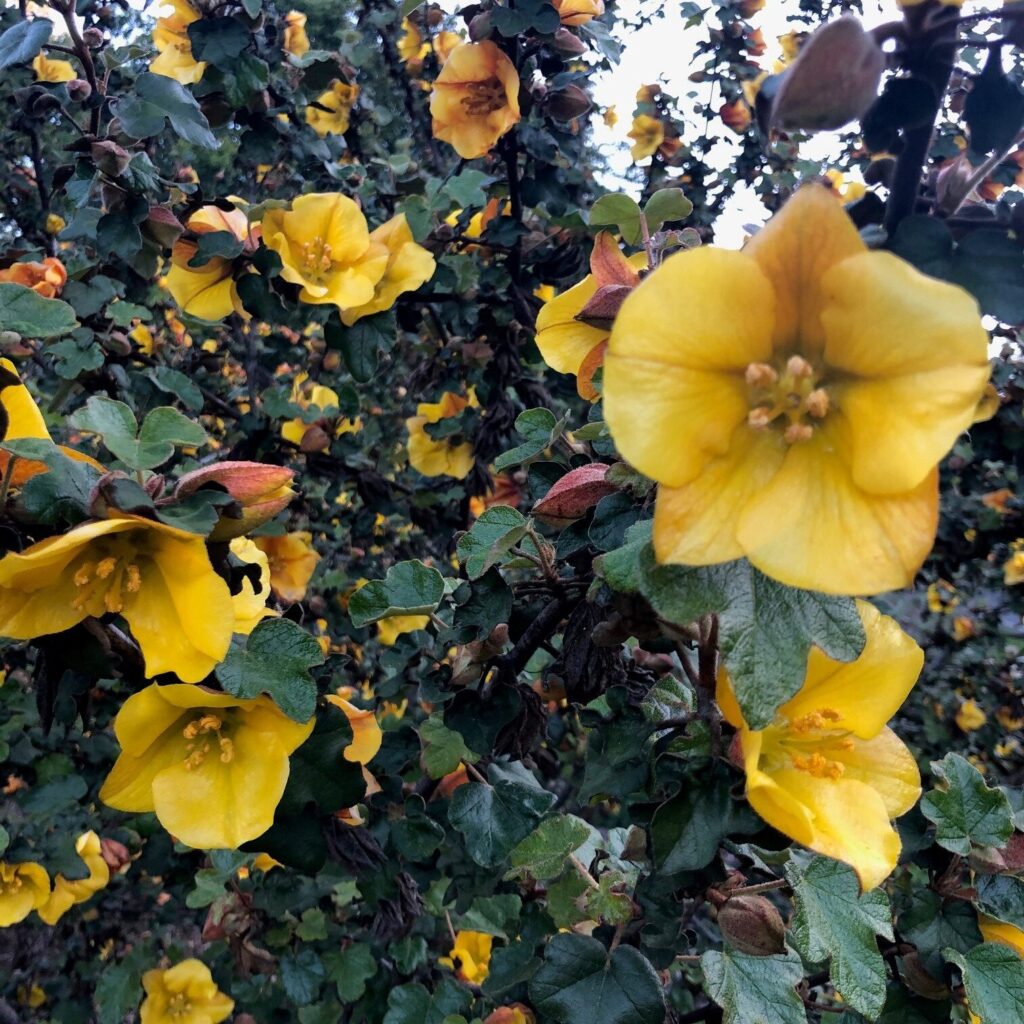
 Donate
Donate
